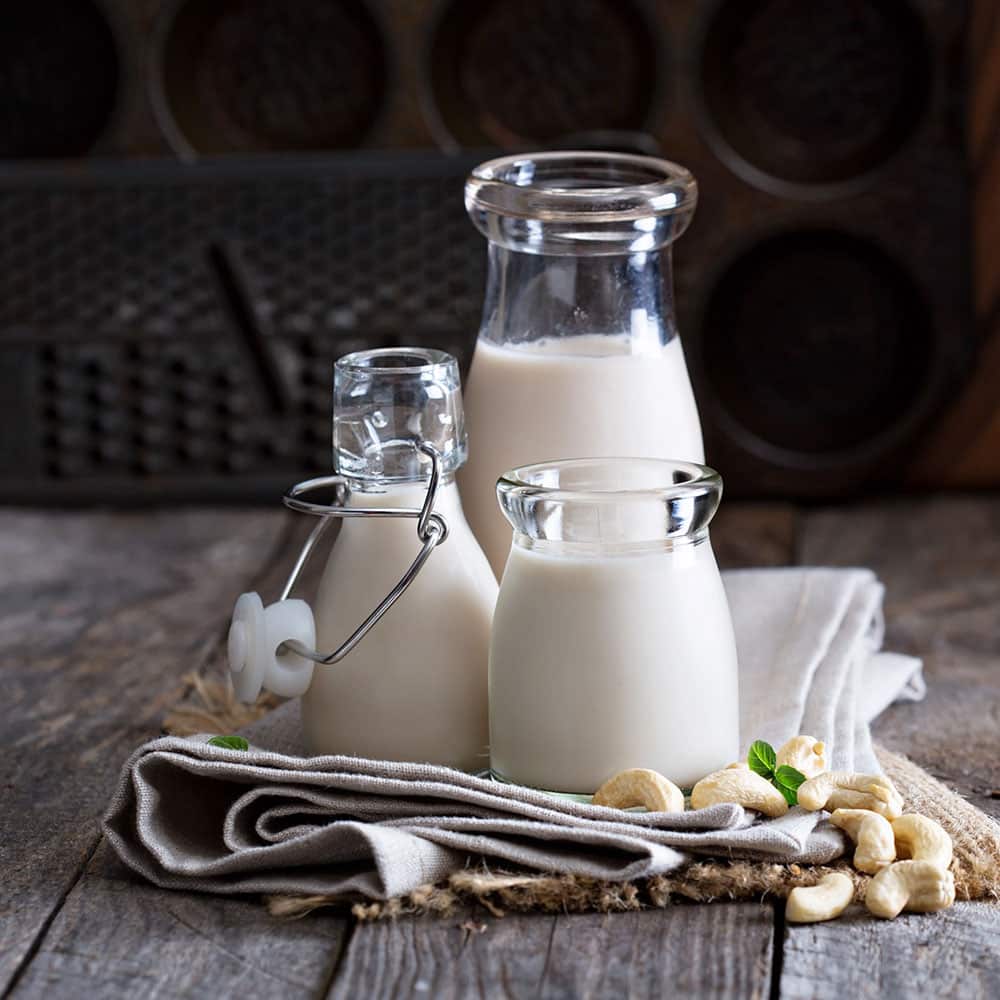Further inspiring the use of dairy milk alternatives, even cooking shows are dedicating segments to demonstrate to their viewers how to make homemade non-dairy milk. The dairy industry is taking a big hit with this change, losing over $1 billion from 2017-2018 alone.
Soy milk is the oldest of the non-dairies. It began gaining popularity in the 1990s when scientists began releasing studies on the benefits of soy, including helping to decrease blood pressure, lowering LDL cholesterol levels, increasing HDL cholesterol, and decreasing the risk for heart disease; and the FDA began allowing manufacturers to include these health claims on the packaging which helped to promote the skyrocketing sales.
Silk Soy milk sales peaked at $1.2 billion in 2008 when newer studies began to make consumers doubt the health benefits of soy and the phytoestrogens once attracting consumers was now being associated with an increased risk of cancer by interfering with estrogen and possibly binding to the estrogen receptor to stimulate cancer cell production. But it is worth noting that these studies were done using higher doses on rats which process estrogen differently than humans, more recent research shows that phytoestrogens are safe when consumed as soy or soy products.
Almond Breeze which had been trailing behind Silk Soy seized the opportunity and started to heavily promote its almond products, especially for those who are lactose intolerant to take over the number one selling spot. Within 2 years even Silk released its own almond milk to try and compete but by 2013 Almond Silk surpassed soy as the best selling non-dairy.
Recent studies show that plant-based options lower the risk of obesity, heart disease, diabetes, certain cancers, and even certain cognitive disorders, and this trend appears to spill over onto milk and other dairy products. Some argue that this trend may be harming health, as an estimated 42% of Americans are suggested not to meet the RDA for calcium, which is important for strong bones and teeth, and bodily functions such as muscle movement, blood clotting, nerve signalling, and maintaining blood pressure. Additionally, 35% of American adults are estimated to be deficient in vitamin D which is crucial for bone development and strength.
Outside of being found in dairy, calcium can be obtained through non-dairy foods such as broccoli, kale, soybeans, collard greens, bok choy, figs, oranges, sardines, shrimp, and salmon. Vitamin D is made by the skin in reaction to sunlight, and it is found in fatty fish, soymilk, cod liver oil, mushrooms, egg yolks, and fortified foods. Both calcium and vitamin D can also be obtained through supplements.
Emerging research suggests that cutting out dairy lowers saturated fat intake, and may help to reduce the debilitating symptoms of multiple sclerosis. A 2107 pediatric study supports this claim, showing that over a 2 year period there was a positive correlation between consumption and relapse rate with a 10% increase tripling the risk of symptom relapse and vegetables and plant-based options lowering the relapse rate. Data from the Nurses’ Health Study also demonstrates a strong link between dairy intake, finding that women consuming 3 or more serving of dairy a day had an increased risk of developing MS by 47% compared to those consuming less than 1 serving per day. The HOLISM study reported that MS patients who do not consume dairy products had a higher quality of life and less disease activity than those who consume dairy, with those having a higher intake of vegetables being associated with reduced levels of disease activity and disability.
Milk and dairy products are among the top sources of saturated fats in the American diet contributing to heart disease, type 2 diabetes, certain cancers, and Alzheimer’s disease. A study published in the American Journal of Clinical Nutrition linked the consumption of dairy products to prostate cancer. Another study published in the British Journal of Cancer has associated dairy with an increased risk of lung, breast, and ovarian cancer in those that are lactose intolerant.
Still, some suggest that recent studies and media campaigns are showing the downsides to traditional cow’s milk, but many of them are flawed. Some say that traditional milk increases LDL cholesterol, but they fail to look at the low fat and nonfat options.
For example, a Harvard study showed that traditional milk does not prevent osteoporosis, but this study compared male/female health professionals who drank 1 glass or less of milk per week to those drinking 2 or more per week. 1-2 glasses per week is a large range, and the USDA recommends people consume 3 servings of dairy per day. With 1 glass as one serving, both groups in this study were likely not drinking enough to notice any benefits.
Others such as Cancer Research UK say that there is no good evidence that milk and dairy cause cancer, rather these products can help to reduce the risk of bowel cancer, and that some studies suggest that large amounts of these products could be linked to an increased risk of prostate cancer but more research is needed to make a solid conclusion.
While the increase of non-dairy milk products is providing more options to those who are lactose intolerant, lactose sensitive, vegan, and to those who want to include more plant-based options in their diet, it appears as if the benefits and risks are an ongoing topic of discussion. That being said it is important to keep in mind the nutrients you could be losing out on for those moving to milk substitutes. Also be sure to read the nutrition labels carefully to watch for added sugars, and be sure to consult with your doctor or certified medical professional before taking any supplements.




